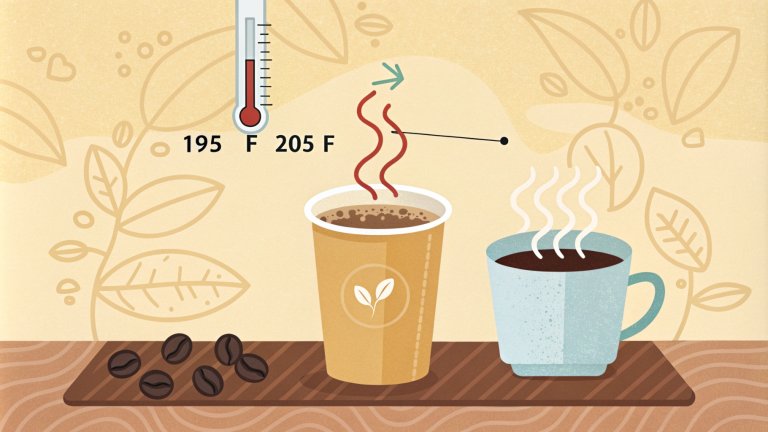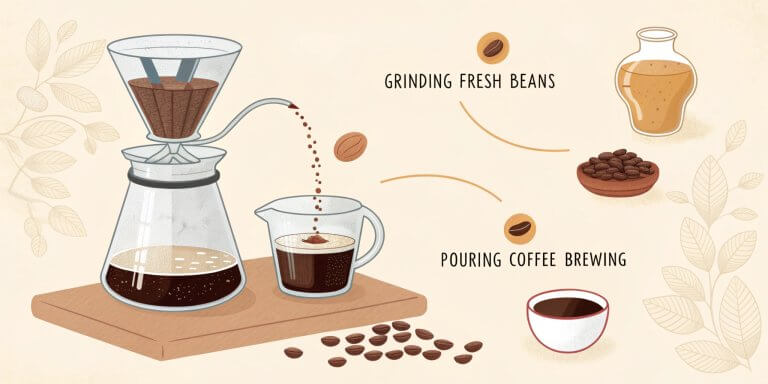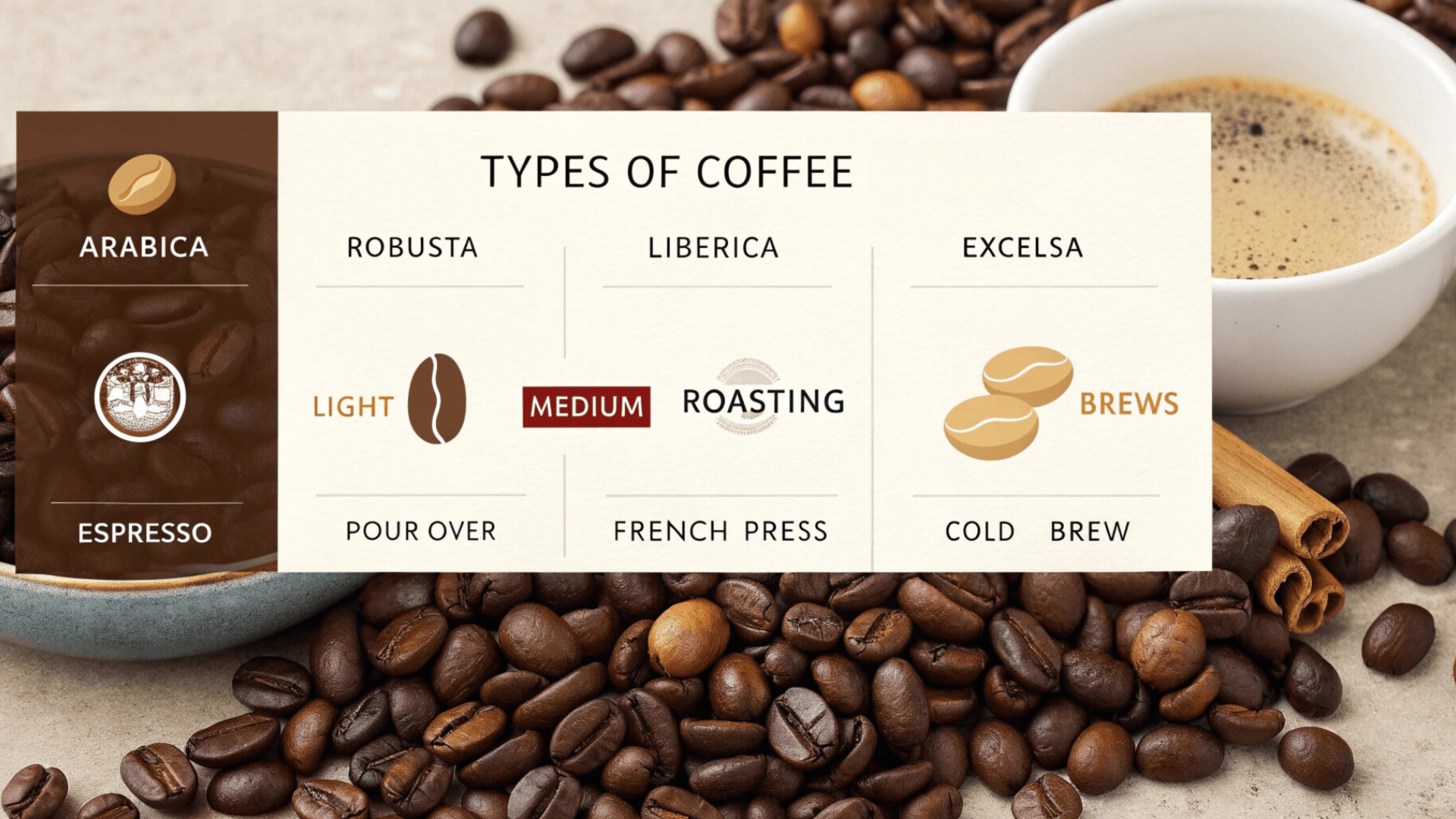
Hey there, coffee lover! Let’s dive into the wonderful world of coffee! It’s more than just a quick caffeine boost – it’s a global phenomenon with a rich history and endless variations. Did you know that over 2.25 billion cups are enjoyed every single day? That’s a whole lot of coffee, love!
From the simplicity of black coffee to the elaborate artistry of espresso-based drinks, there’s something for everyone. This guide will help you explore the key elements that make each type of coffee special, starting with the beans themselves.
Think of coffee beans as the foundation of your cup. The two most common types you’ll find are Arabica and Robusta. Arabica, the most popular choice, is known for its sweeter, more complex flavor that can be enjoyed in black. On the other hand, Robusta packs a punch with a higher caffeine content and a bolder, more bitter taste.
Next, the roasting process transforms green coffee beans into the aromatic brown beans we know and love. The roast level, from light to dark, influences the final flavor and intensity of the coffee.
Then comes the exciting part – brewing! From simple drip coffee makers to elegant pour-over methods, how coffee is brewed plays a crucial role in its taste and texture. Each method extracts the coffee’s unique characteristics differently, resulting in various flavor profiles.
Finally, we can’t forget the additional ingredients that add a touch of magic to our coffee experience. Creamy milk, sweet syrups, and fluffy foam transform a simple cup into a decadent treat.
So, whether you’re a seasoned coffee connoisseur or just starting your caffeine journey, get ready to explore the fantastic world of coffee!
Type of Coffee Beans
You got it! Let’s explore the fascinating world of coffee beans! As we discussed earlier, coffee beans are like the building blocks of your cup, and understanding the different types can elevate your coffee experience.
The Two Main Families: Arabica vs. Robusta
You’ll find these two names on almost every coffee bag. They’re the heavyweights of the coffee world!
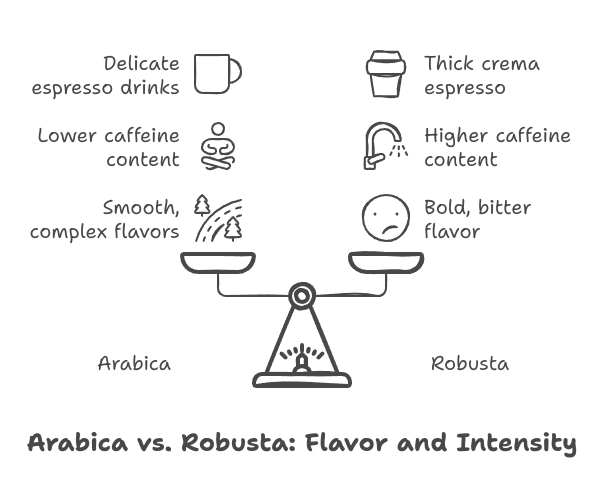
Beyond the Big Two: Liberica and Excelsa
While Arabica and Robusta dominate the market, there are a couple of other intriguing players in the coffee bean game.
Coffee Varieties and Varietals
Think of it like this: a coffee species (like Arabica) is like a family; within that family, you have different members with distinct personalities (varieties and varietals). Each array or varietal brings its unique twist to the flavor profile.
Here are a few popular varietals that coffee enthusiasts rave about:
So, there you have it – a glimpse into the wonderful world of coffee beans. Remember, the bean is the heart of your coffee, and knowing your beans can make all the difference in finding your perfect cup!
The Art of Roasting: Unveiling Flavor Profiles
Okay, let’s move on to the next step in the coffee journey: roasting! It’s like magic, transforming those raw green coffee beans into the aromatic wonders we crave.
Roasting is where the true character of the bean comes alive. By applying heat, we unlock a symphony of flavors and aromas. Imagine those beans transforming beautifully like a caterpillar becoming a butterfly.
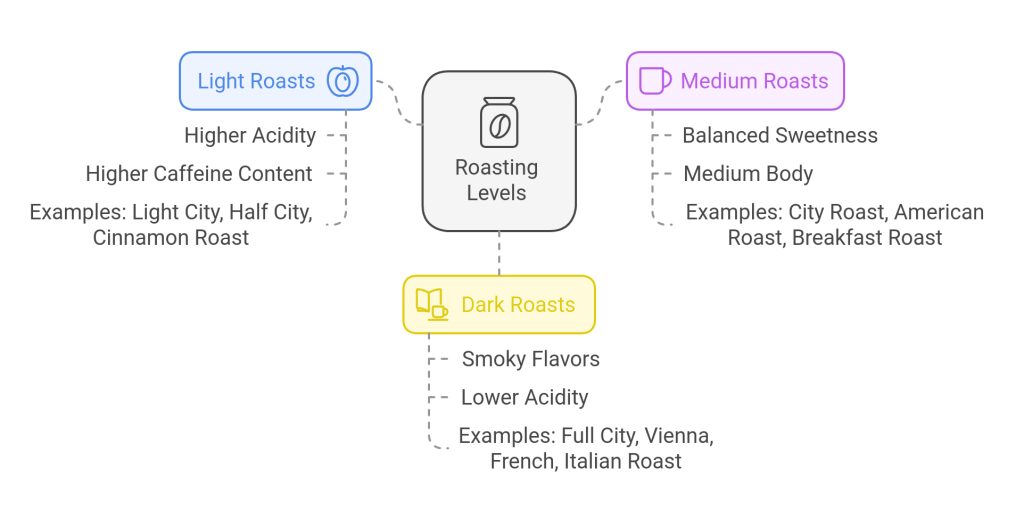
The degree of roasting is key. It’s like a spectrum, from light and bright to dark and intense, with each roast level creating a unique taste experience.
Examples: Light City, Half City, Cinnamon Roast
Examples: City Roast, American Roast, Breakfast Roast
- Dark Roasts: Dark roasts are bold and adventurous beans roasted for the longest time to bring out their full intensity. They’re dark brown, almost black, and often have an oily surface. These beans have a story to tell, with smoky and robust flavors. They have a lower acidity and tend towards a more bitter flavor profile.
Examples: Full City, Vienna, French, Italian Roast
So, whether you prefer a bright and tangy cup or a dark and smoky brew, the roasting process plays a crucial role in shaping the coffee experience. It’s like an art form, carefully crafting the unique flavors and aromas of each cup.
Grinding It Out: The Importance of Grind Size
Grinding those coffee beans is another crucial step in our coffee adventure! It’s not just about breaking them down; it’s about creating the perfect surface area for the flavors to bloom during brewing.
Think of it this way: the faster the coffee extracts, the finer the grind. Extraction time directly affects how strong and flavorful your coffee will be.
Different brewing methods need different grind sizes to get the best results. Let’s look at the most common grind sizes:
So, remember, the right grind size is like a secret handshake with your brewing method. Match them up correctly, and you’ll be rewarded with a perfectly balanced coffee bursting with flavor!
Brewing Methods: From Simple to Sophisticated
Let’s explore the world of coffee brewing! There are many ways to make coffee, from simple methods at home to more specialized techniques. The brewing method you choose dramatically impacts the flavor and strength of your coffee.
Brewing Methods
Here are the four main categories of brewing methods:
Decoction or Boiling
This is the OG of coffee brewing! A decoction is about direct contact between the coffee grounds and boiling water. It’s a bold move that results in a strong and intense brew. Think of it as extracting the most primal essence of the coffee bean.
Infusion or Steeping
Infusion is a gentler approach, like a slow dance between the coffee grounds and hot water. The grounds are immersed in the water for a specific time, allowing the flavors to unfurl and mingle slowly. It’s a great way to extract those nuanced notes and create a smooth, well-rounded cup.
Gravitational Feed or Filtration
This method lets gravity do the work! Hot water is poured over a bed of coffee grounds, and gravity pulls the water through, separating the brewed coffee from the grounds below.
Pressurized Percolation
This method is where things get more intense. Pressurized percolation forces hot water through finely ground coffee, creating a concentrated and flavorful brew. It’s like squeezing every drop of flavor out of those tiny particles.
The Espresso Empire: A Foundation for Creativity
Espresso is the heart of a vast and creative coffee empire! It’s a concentrated brewing method that uses finely ground coffee and pressurized hot water to extract a rich and flavorful shot. Think of it as the foundation for countless coffee creations.
Here’s why espresso is so unique:
Espresso-based drinks are a staple in coffee shops around the world. Some popular examples include:
The invention of the espresso machine in the early 20th century revolutionized the coffee world. It allowed for a quick and efficient way to brew a concentrated coffee shot, opening the door for a new era of coffee creativity. The “Espresso Empire” continues to expand as baristas and coffee enthusiasts explore new and innovative ways to use this beloved brewing method.
Beyond Espresso: Exploring Other Coffee Drinks
While espresso reigns supreme in the coffee world, there’s a whole universe of coffee drinks beyond the espresso empire, each with its unique charm and flavor profile. Let’s venture beyond those familiar espresso-based creations and explore some other delightful coffee experiences:
Beyond these examples, the world of coffee is constantly evolving, with new brewing methods and flavor combinations emerging constantly. So, embrace your curiosity and explore the diverse and delicious world of coffee beyond the espresso empire!
Conclusion
The coffee world is a vast and exciting landscape of diverse flavors, brewing methods, and cultural traditions. From the simple pleasure of a black coffee to the intricate artistry of an espresso-based creation, there’s a coffee experience for every taste and preference.
By exploring the fundamentals of coffee beans, grind sizes, brewing methods, and popular coffee drinks, you can confidently navigate this world and discover your own perfect cup. Embrace the journey of coffee exploration and savor the endless possibilities this beloved beverage has to offer!

